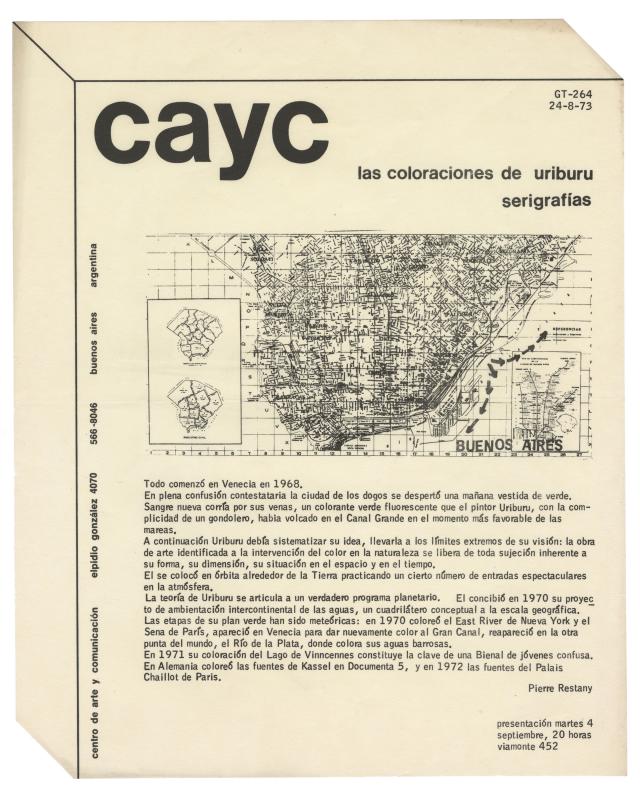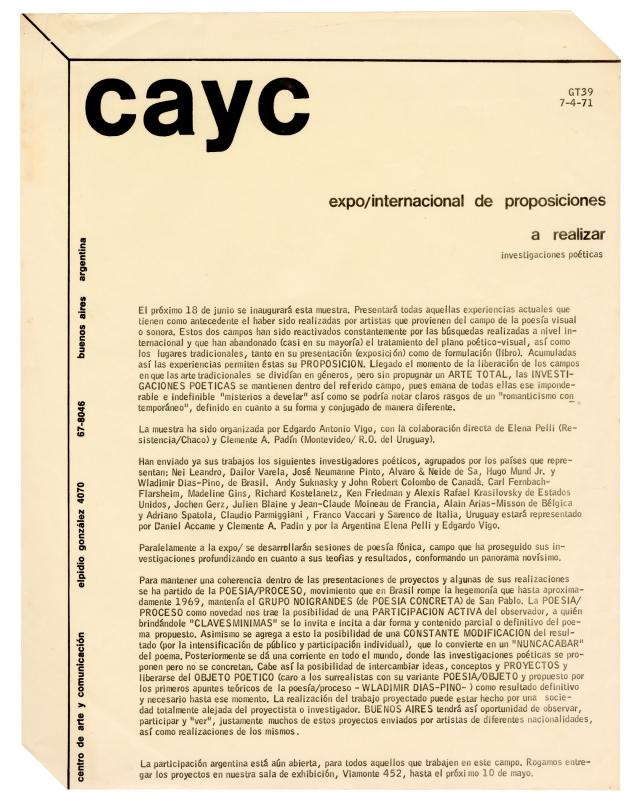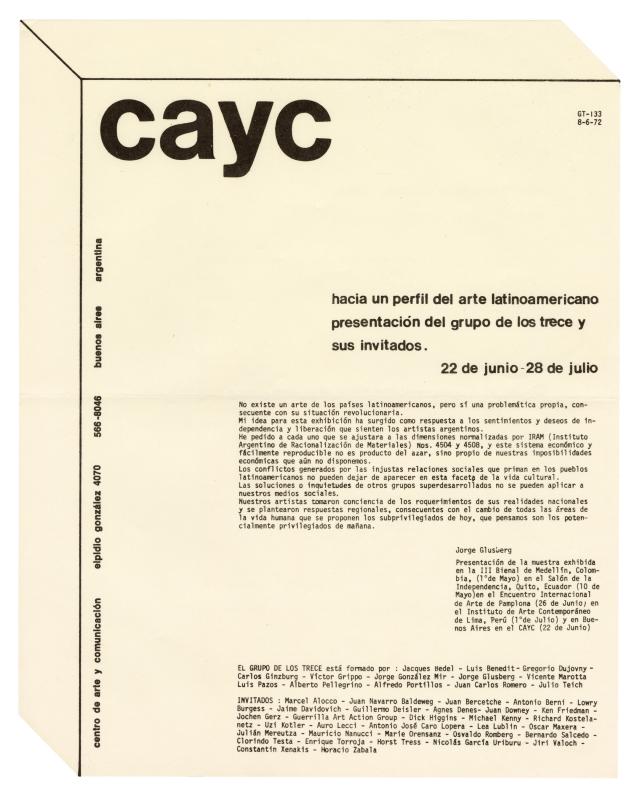Ever since it was founded, the CAYC (Centro de Arte y Comunicación), helmed by the cultural promoter, artist, and businessman Jorge Glusberg, was intended as an interdisciplinary space where an experimental art movement could flourish. The establishment of collaborative networks connecting local and international artists and critics played an important role in this process. The exhibitions shone a light on these exchanges, in which overviews of trends or individual artists provided an introduction to the innovations of international contemporary art and made Argentine and Latin American artists better known on the global scene.
In 1974 the CAYC began focusing a great deal of its attention on this project, promoting a variety of initiatives in a contemporary circuit of new cultural spaces and centers that were emerging in Europe at the time. The exhibition Arte de Sistemas en Latinoamérica toured various European cities from 1974 to 1976, showing a selection of recent regional works that reflected the concept of “arte de sistemas.”
As part of the campaign to promote the fourth edition of the exhibition at the Espace Pierre Cardin in Paris, this newsletter published a copy of a work by Clemente Padín (b. 1939). Padín is an artist, poet, art theorist, and educator; he has focused on the production and promotion of experimental art since the mid-1960s, with a particular interest in the fields of mail art, visual poetry, performance art, and action art. In his native Uruguay he directed several publications, such as Los huevos del Plata (1965–69), OVUM 10, and OVUM (1969–75). During his time in exile in São Paulo, he developed relationships with a large circle of artists. He produces mail art with his fellow Uruguayans Jorge Caraballo and Haroldo González; he is known for his work at an international level (see GT-263 [doc. no. 1476483]). Padín and the Argentinean artist Edgardo Antonio Vigo (1928–1997) took part in several of the CAYC’s activities (GT- 39 [doc. no. 1476286]), where he felt at home in terms of his interest in experimental work and his beliefs concerning the struggle for political and economic freedom in Latin American countries.
For many of its exhibition catalogues, the center distributed a sheet with a set grid where artists could sign up. With this method the CAYC could reproduce each participant’s work across several supports and formats, including newsletters and publications that were independent of the CAYC, such as Héxagono 71, the magazine published by Edgardo Antonio Vigo. This led to a greater circulation of images on a broader scale through the CAYC’s campaigns to promote its various initiatives in other parts of the world. Something similar was happening with the heliograph prints produced at several of the center’s exhibitions (GT-133 [doc. no. 1476312]).



